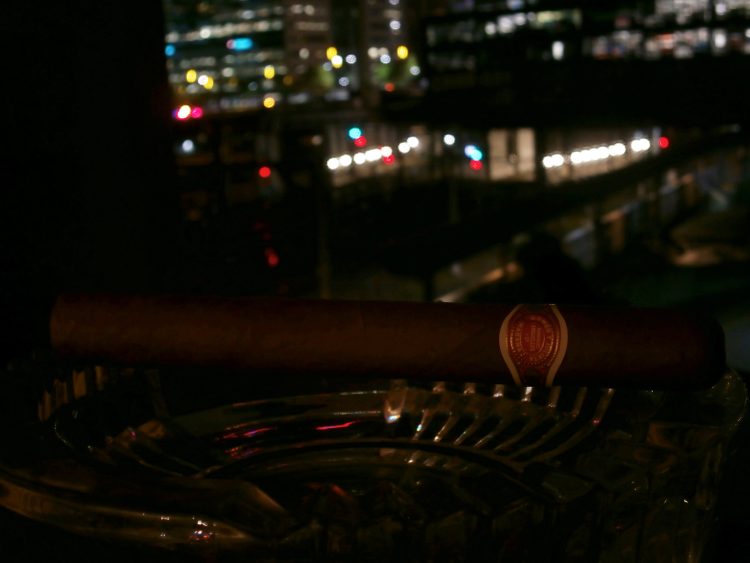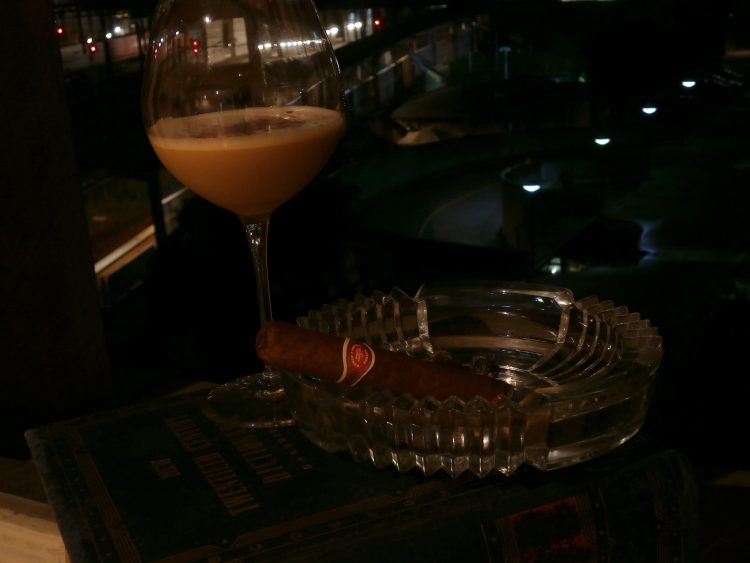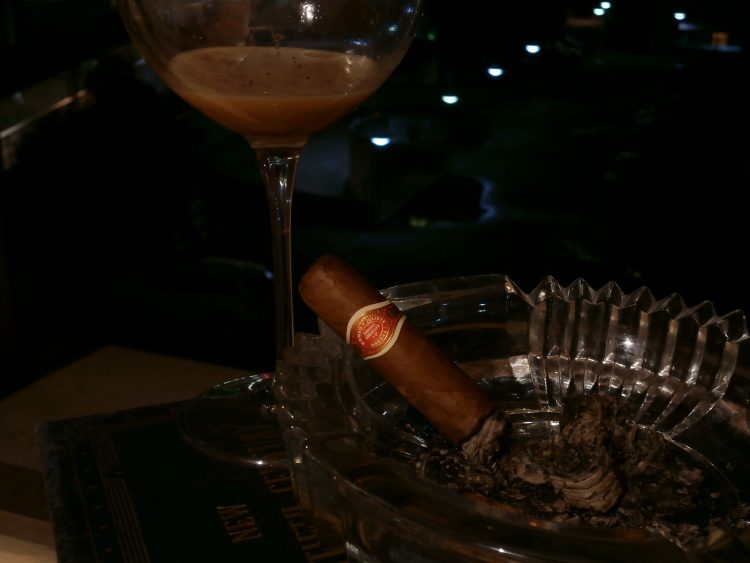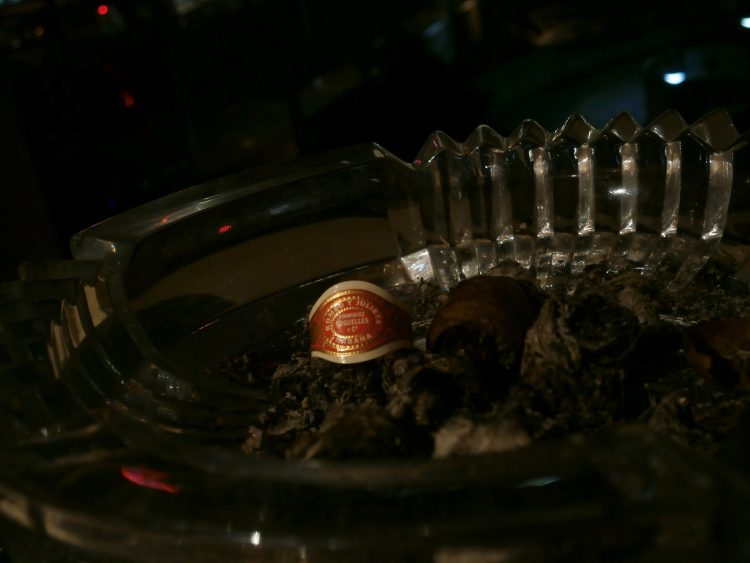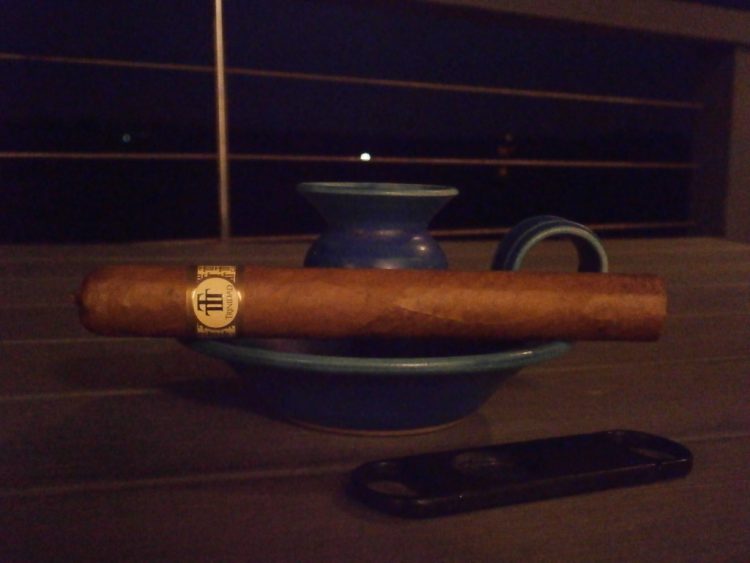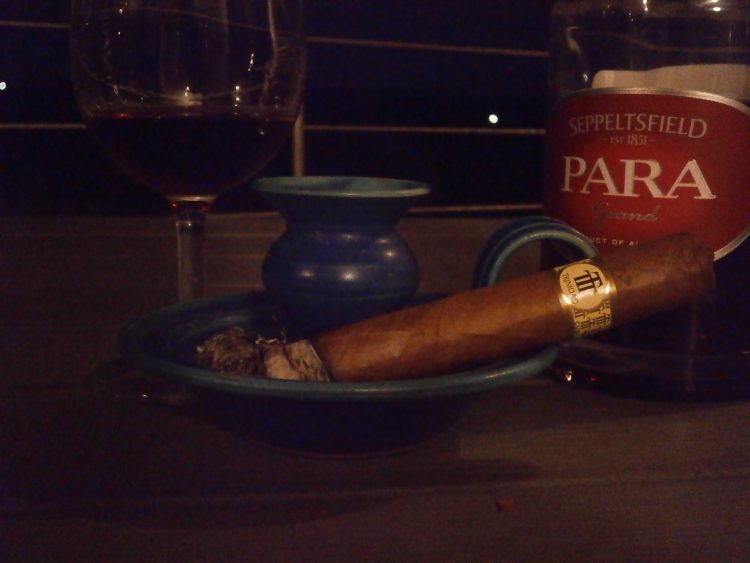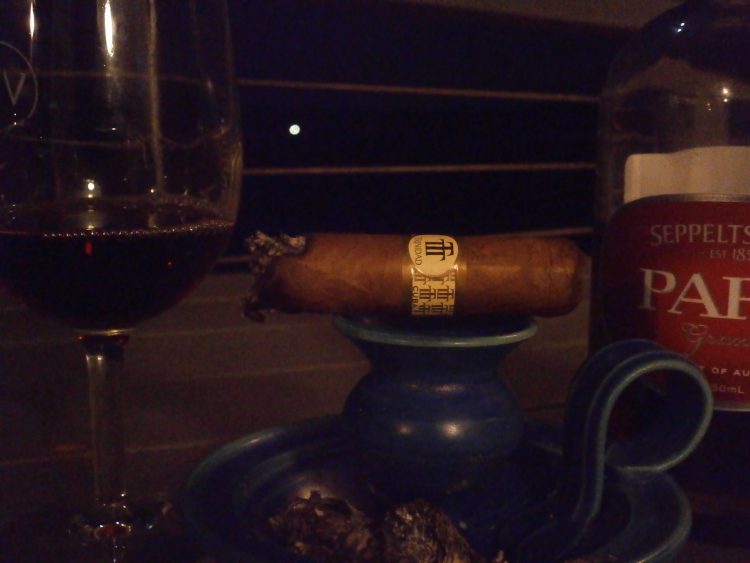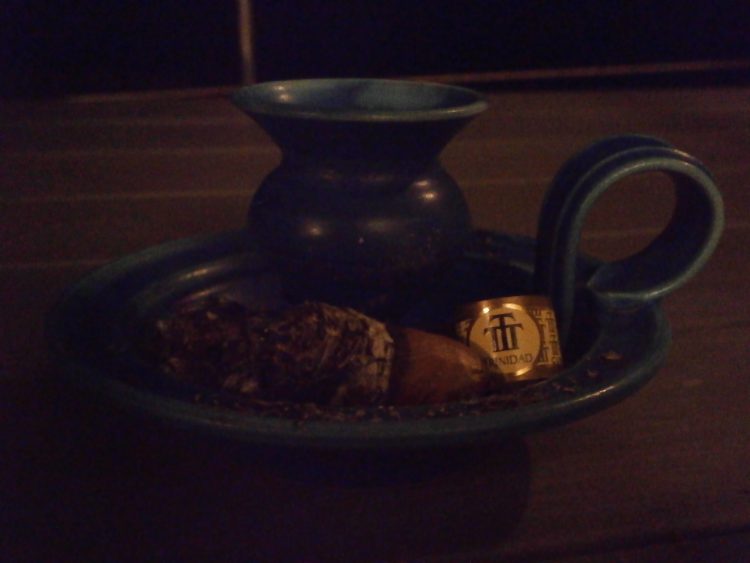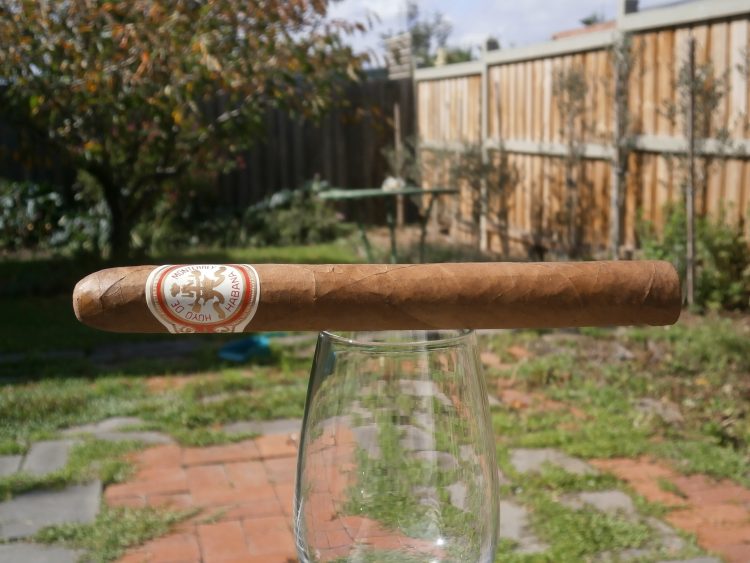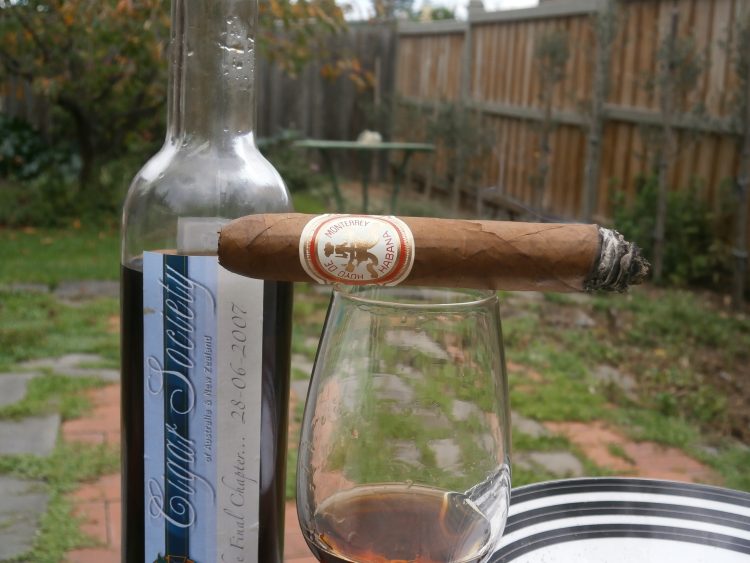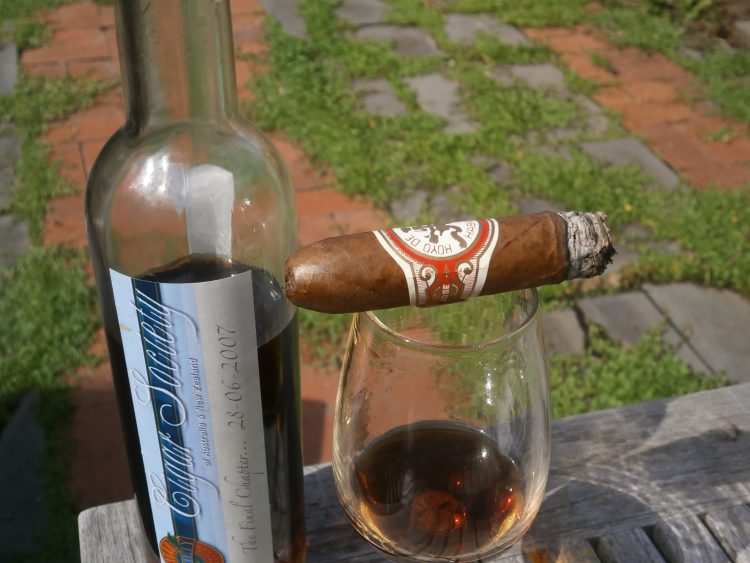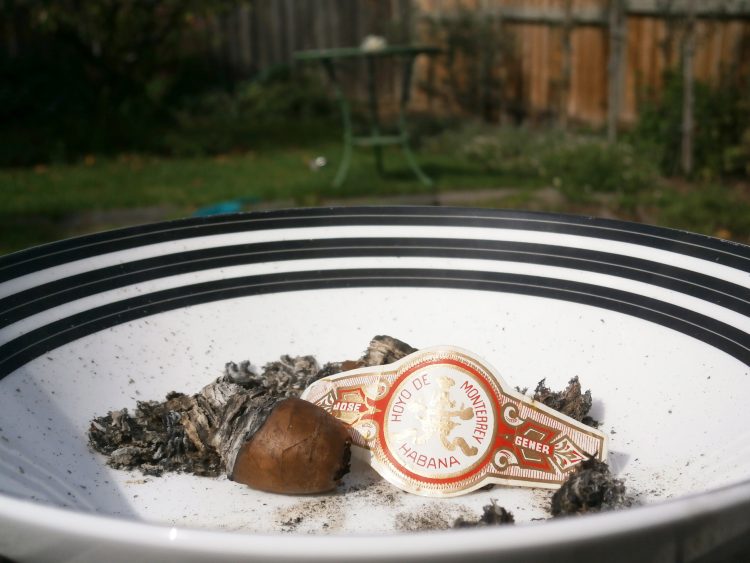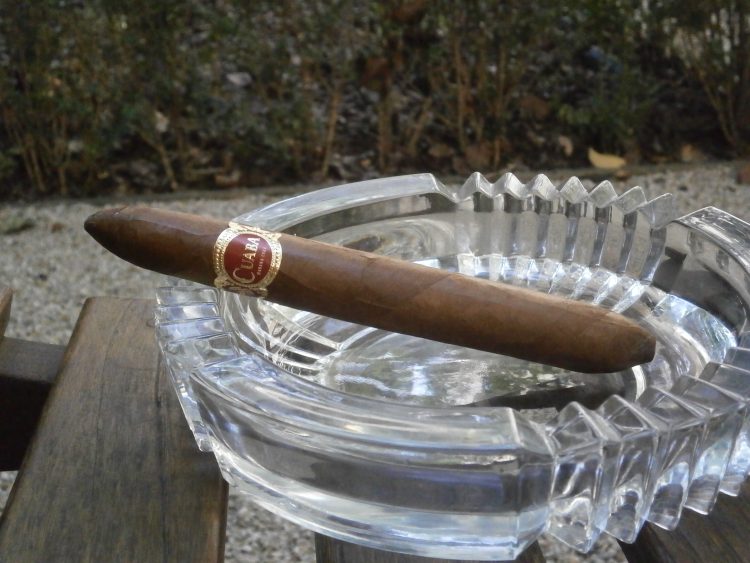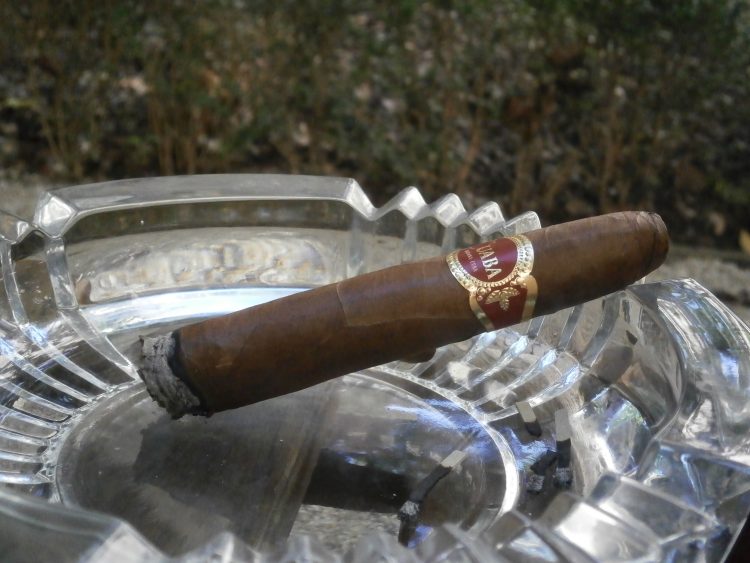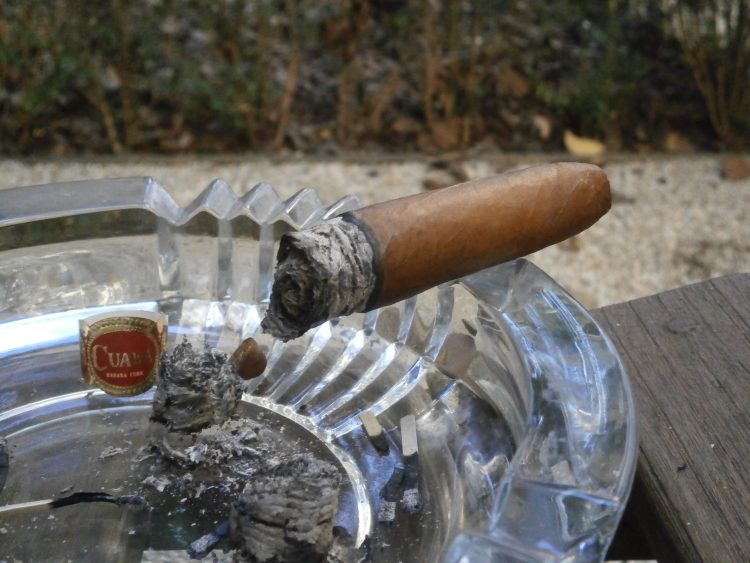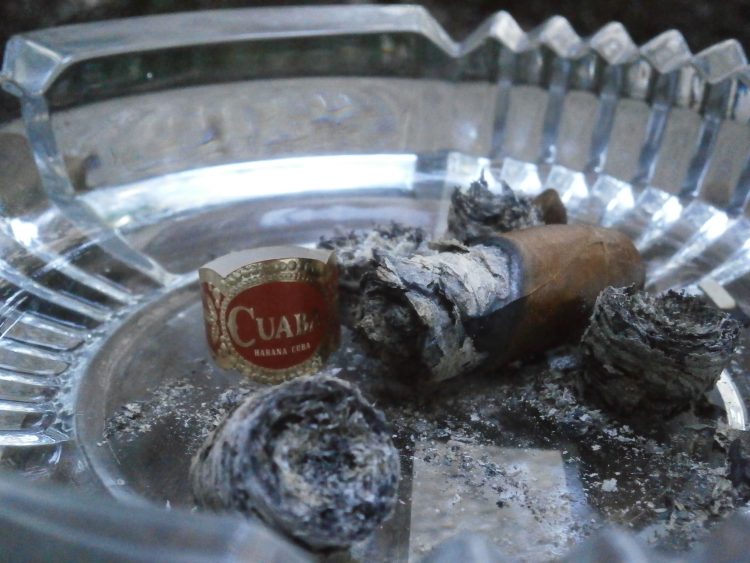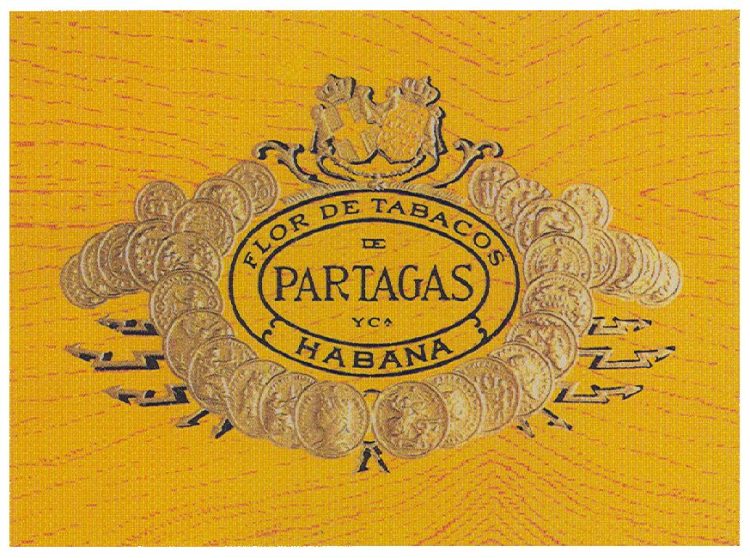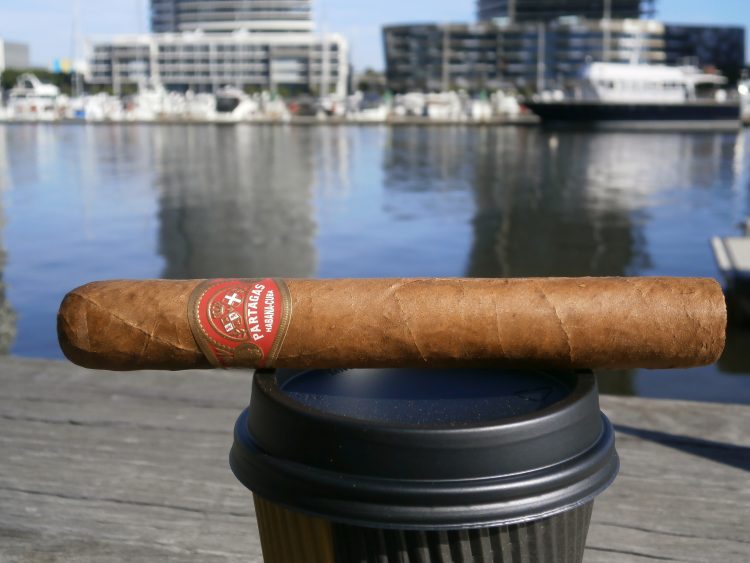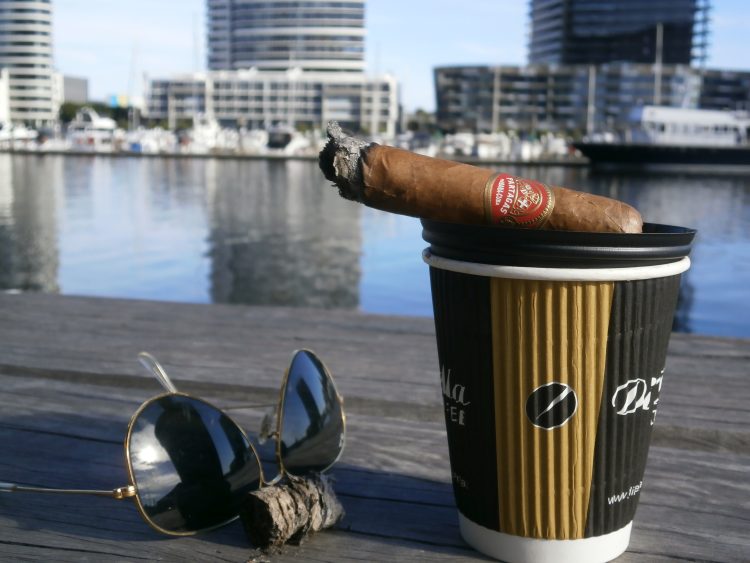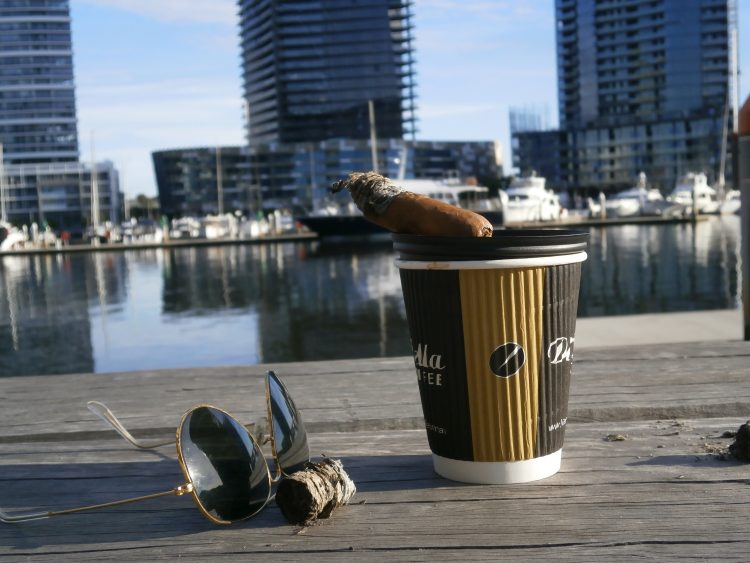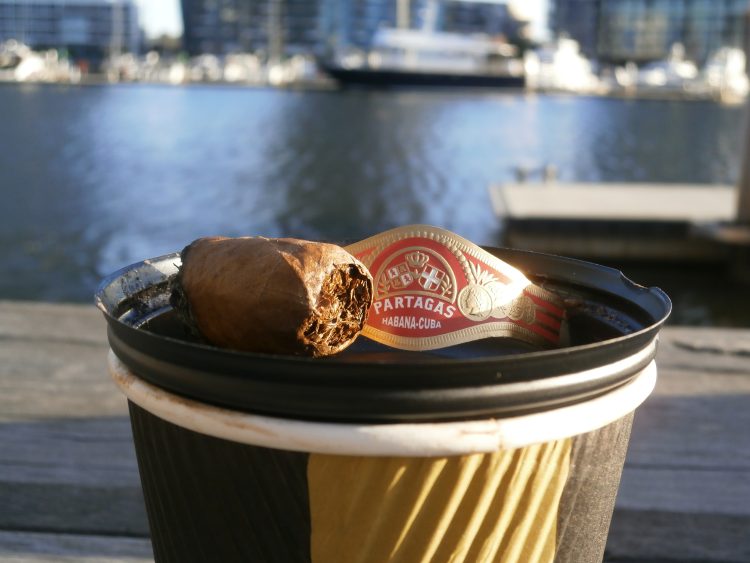I’m perched precariously on an inner-city windowsill on an autumn night. A gusty cool breeze blows in from the south – it’s not cold enough to make smoking unpleasant, but I suspect that it will blow every puff of tonight’s cigar back through the open window, and entirely defeat the point of my sitting out here. My cigar tonight is the 2004 entry in the Colección Habanos, the Romeo y Julieta Fabulosos No. 6, weighing in at 52 x 180mm, something like an overweight Churchill. It’s not entirely clear what the significance of the number six is in the name, as there are only two old cigars that carried the name Fabulosos, not five (and neither of those wore a number as a suffix).
I lift the cap of the cigar with a sharp knife, and find under it a substantial divot, the mark of superior construction. Lit with a humble Bic, it begins fantastically well, with heavy cream and sweet toffee, and a note of green apple, something I’ve never tasted in a cigar before. The toffee flavour is so distinct and so specific that it triggers in me a long forgotten sense memory: in Red China when I was young there was sometimes a man in the market beyond the walls of our compound who would make toffee lollies. You would pay your money and then spin a wheel that would select for you an animal from the Chinese zodiac, and the man would lay a stick on the table and with liquid toffee make the design of your animal around it, setting it with water. The end result was something like an elaborate Chinese lollypop. The dragon was far and away the best design (aside from being the coolest animal in the zodiac, it was four times larger than anything else) and many times while waiting in line I watched other children successfully spin it up. I never managed it, always landing on a lowly rat or snake. In the west I’m sure the dragon would have sat at the top of a price structure, and imperialist children could have had it freely if they’d complained to their parents enough, but not me; I grew up in a communist country, and what you landed on was what you got. Well, I’m sure my father could have greased the vendor with a packet of cigarettes or something and got me my dragon, but I didn’t know that at the time. Anyway, that’s what the toffee in the Fabulosos No. 6 tastes like: ‘90s Chinese street lollies.
Around the halfway point the Fabulosos No. 6 still carries a deep cream flavour, the tobacco being very light. There is some grassiness, and a little nutmeg. It is an incredibly elegant cigar, although it has lost a little of the flavour depth that it had at the start, and has become a little one dimensional, although that dimension is the best possible dimension for a quality cigar.
Alongside the cigar I’m enjoying a Coffee Cocktail, a recipe I got out of my Savoy Cocktail Book, which makes a point of noting that the name is a misnomer as coffee is not to be found among its ingredients. In my interpretation the drink is a shot of tawny port, half a shot of brandy, a liberal dash of Cointreau, a sugar cube and the yolk of one egg: add ice and shake it all to hell, strain into a wine glass and dust the result with nutmeg. The more you shake it the closer you will get to the intended appearance, which vaguely resembles milky coffee. The Savoy Book is the classic cocktail book, and despite several new editions its recipes are largely unchanged since the 1920s (and as a result many of them call for long extinct liqueurs). Around 90% are some tiny variation on one part gin, one part vermouth, a dash of absinth, shake well and strain into a cocktail glass. In every event they are cocktails for serious drinkers who like the taste of booze and complex aromatics: you will not find pineapple being used to mask the taste of vodka in the Savoy Book, and very few of its recipes turn out much less alcoholic than a whiskey on the rocks. The Coffee Cocktail is no exception; the egg gives it a creamy texture and it tastes sort of like mulled wine. I’ve been making them a lot recently, and generally they’re followed in fairly short order by a Whiskey Sour as I need to do something with the left over egg white. The sours aren’t as good.
In the last few inches the cigar becomes earthy, some sandy soil and burning cedar. The cream flavour, the most delicate of the flavours I commonly find in cigars, generally leaves within the first inch or so, but in this cigar it lingered well past the halfway point. There can be no doubt about it: this is an excellent cigar. Flawlessly constructed it is subtle, elegant, and relaxing. That said, however, it didn’t knock my socks off. This is great when I think about it, but if I had smoked it among friends, thinking more about the discussion at hand than the cigar, I wouldn’t have noticed how good it was. A truly great cigar is undeniable, and won’t brook distractions.
But that said, it would take a hedonist of the highest order to walk around a party with a beer bottle in one hand and a Fabulosos in the other – if you’re in the market for one of these, then you are no doubt serious enough about smoking cigars to smoke this one alone, or with like-minded aficionados. In the sphere of the Colección Habanos it’s better than the Hoyo and not as good as the Trinidad. In the world of Cuban cigars it’s among the very best. Recommended.
